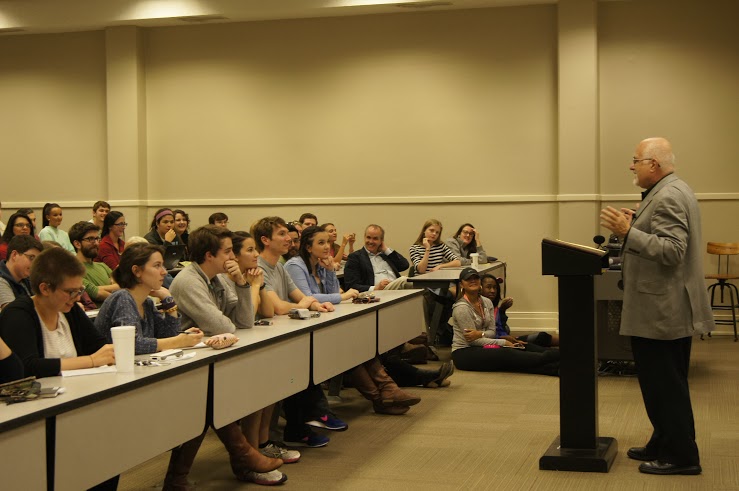Students filled 125 Ten Hoor hall this Thursday, Nov. 12, to hear Ron Numbers talk about the revolution of dinosaurs in Creationism for the Allele lecture series.
Erik Peterson, an assistant professor in the history department, introduced Numbers.
“Not only amazing for what he’s written and his mind, but an exemplar of a kind human being,” Peterson said.
Numbers began by explaining that when dinosaur fossils started gaining publicity in the 1860s, many creationists tried to explain the phenomenon.
“A large swath of conservative Christians thought dinosaurs had been created by Satan,” he said.
They used this explanation to enforce the idea that Satan was trying to ruin people’s faith in God.
“We’re going to talk about how dinosaurs went from Satanic creatures to being the Darwins of creationism,” Numbers said.
Numbers said few anti-evolutionists paid much attention to dinosaurs until the Darrow vs. Bryan Supreme Court case in 1925, better known as the Scopes-monkey trial. In the 1930s, paleontologist Roland Bird discovered fossilized dinosaur tracks alongside what appeared to be giant, human-like tracks in the Paluxy riverbed.
Numbers said this laid the groundwork for the idea that humans and dinosaurs inhabited the earth at the same time. Groups called young-earth creationists and flood-geologists embraced the idea.
In the 1950s, a fundamentalist published an article in a religious magazine that claimed to have “indisputable evidence that old giant humans had lived at the same time.”
After this, anti-evolutionists split into different theories about the relationship between Christianity and dinosaurs, but by 1980s most evangelical Christians had abandoned the idea that the footprints found in the Paluxy River were humans. However, they did not abandon the idea that humans lived at the same time and turned to other places in the world to provide proof.
Numbers said the flood geologists to this day hold on to the belief that there is fossil evidence for the coexistence of humans and dinosaurs. He said he does not think any evidence will ever change this.
“If you really believe in a six to 10,000 year chronology of the Earth, it is going to be hard to destroy that with evidence,” he said.
Numbers also stated that he thinks evolution is not taught well enough at universities, including his, and this is part of the reason why some of the general public claims there is no evidence to prove evolution.
Numbers is a professor of the history of science and medicine at Hilldale University.









